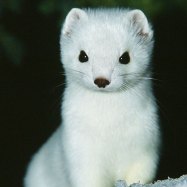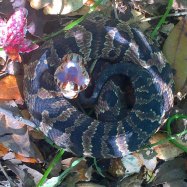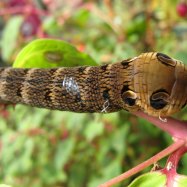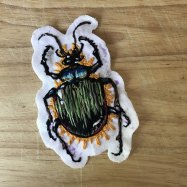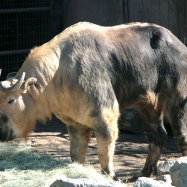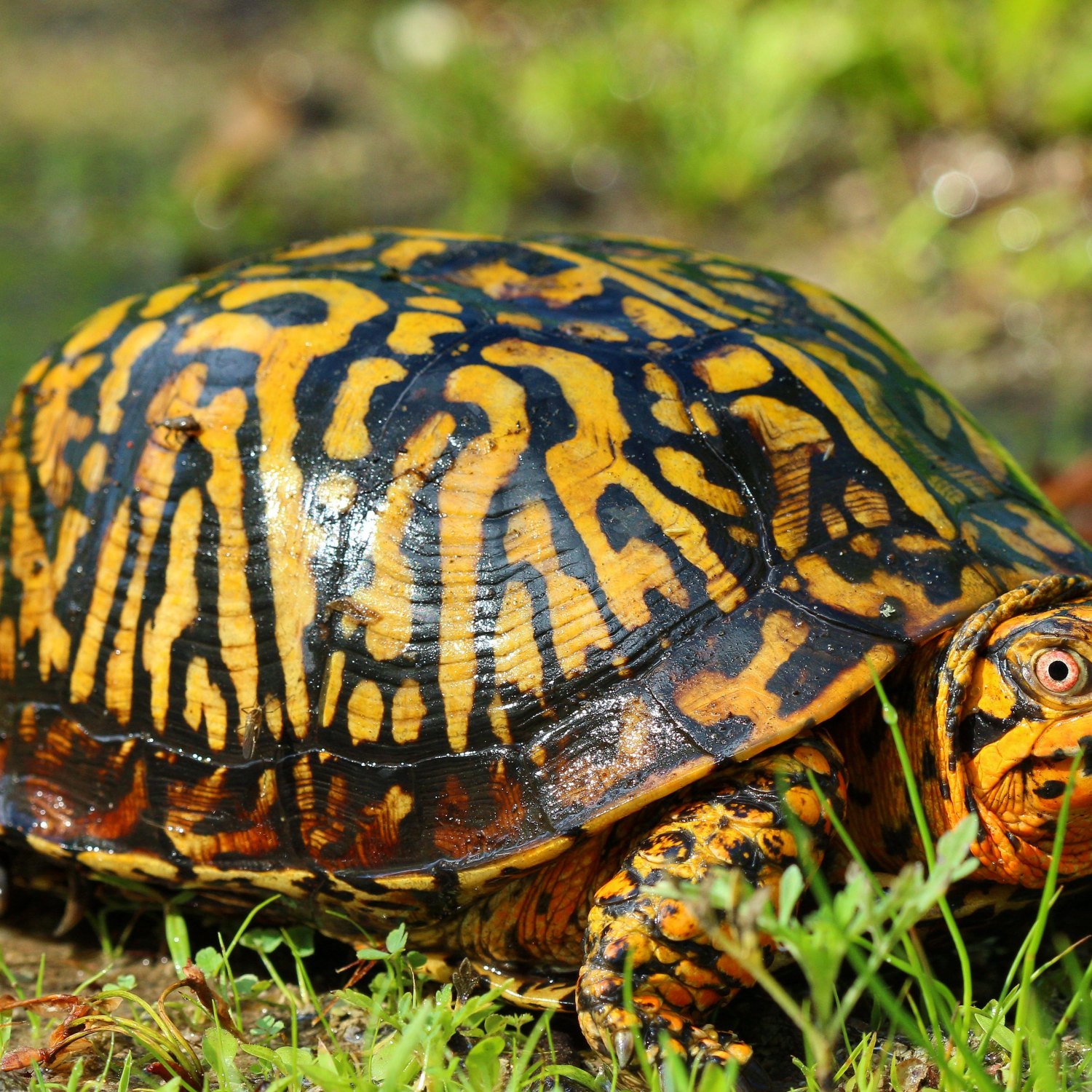
Box Turtle
4-7 inches (10-18 cm)
Did you know that Eastern and Central parts of the world are home to a unique and interesting animal called the Box Turtle? These small reptiles, measuring between 4-7 inches long, belong to the Emydidae family and have a distinct dome-shaped carapace with a hinged plastron. Keep an eye out for these fascinating creatures on your next nature walk! #BoxTurtle #Emydidae #NatureWalk
Animal Details Summary:
Common Name: Box Turtle
Kingdom: Animalia
Habitat: Forest, grasslands, wetlands
The Fascinating World of Box Turtles
When we think of turtles, we often picture the large, slow-moving creatures we see in ponds or on the beach. But, did you know that there is a smaller, more elusive turtle that can be found roaming the forests and grasslands of North America? Meet the box turtle - a unique and fascinating reptile with a long history and many interesting features.A Closer Look at Box Turtles
Scientifically known as Terrapene Carolina, the box turtle is a member of the Animalia kingdom and the reptilia class. It belongs to the order Testudines and the emydidae family Box Turtle. Although it has a widespread geographical distribution across North America, it is particularly prominent in the eastern and central regions of the United States.One of the most distinctive features of the box turtle is its coloring. Its skin and shell can range from dark brown to black, with vibrant yellow, orange, or red markings. This unique coloration not only makes them stand out in their natural habitat but also serves as camouflage, blending in with the forest floor or fallen leaves.
A Perfectly Adapted Habitat
Box turtles are versatile creatures, able to thrive in various habitats such as forests, grasslands, and wetlands. However, they prefer areas with access to both water and land, providing them with a balanced diet and protection from predators. Their ability to adapt to different environments has allowed them to survive for millions of years, evolving to become the fascinating creatures we know today.Omnivorous Appetites
Just like their adaptable habitat, box turtles have an omnivorous appetite, meaning they eat both plants and animals. Their diet primarily consists of insects, worms, berries, fruits, and leafy greens Beefalo. They have even been known to capture and eat small vertebrates and carrion. This varied diet allows them to obtain all the necessary nutrients for their survival, making them resilient to changing food sources in their environment.The Amazing Shell and Body Shape
One of the most iconic features of box turtles is their shell. Unlike other turtles, which have a streamlined shell for aquatic mobility, box turtles have a more dome-shaped carapace. The shell is made up of bony plates covered in keratin, providing them with protection from predators. But what makes the box turtle's shell truly unique is its hinged plastron, allowing it to completely enclose its head and limbs when threatened.Aside from their shell, box turtles also have a unique body shape. Their short, stout limbs and strong jaws make them efficient burrowers, able to dig underground and hibernate during the colder months. Additionally, their flexible neck and sharp beak make them agile hunters, enabling them to catch and consume their prey effectively.
A Surprisingly Long Life
One of the most impressive characteristics of box turtles is their longevity. In captivity, these turtles can live up to 50 years, while in the wild, they can reach an amazing age of 100 years old. This makes them one of the longest-living reptiles in the world. Their slow metabolism and ability to hibernate during harsh conditions contribute to their long lifespan.Promoting Conservation
Although box turtles have a long lifespan, their population is under threat due to human activities such as habitat destruction and the illegal pet trade. Many states have listed them as a species of special concern, and it is illegal to own them as pets in some areas. Fortunately, several conservation efforts aim to protect these fascinating creatures, including the implementation of protected areas and education on responsible ownership.In Conclusion
Box turtles are more than just small and slow-moving reptiles. They are incredibly resilient creatures that have adapted to various habitats and survived millions of years. With their distinctive coloring, unique shell and body shape, and impressive lifespan, they continue to amaze and intrigue people around the world. Let us continue to appreciate and protect these remarkable animals, ensuring their existence for generations to come.

Box Turtle
Animal Details Box Turtle - Scientific Name: Terrapene Carolina
- Category: Animals B
- Scientific Name: Terrapene Carolina
- Common Name: Box Turtle
- Kingdom: Animalia
- Phylum: Chordata
- Class: Reptilia
- Order: Testudines
- Family: Emydidae
- Habitat: Forest, grasslands, wetlands
- Feeding Method: Omnivorous
- Geographical Distribution: North America
- Country of Origin: United States
- Location: Eastern and Central
- Animal Coloration: Dark brown to black, with yellow, orange, or red markings
- Body Shape: Dome-shaped carapace, hinged plastron
- Length: 4-7 inches (10-18 cm)
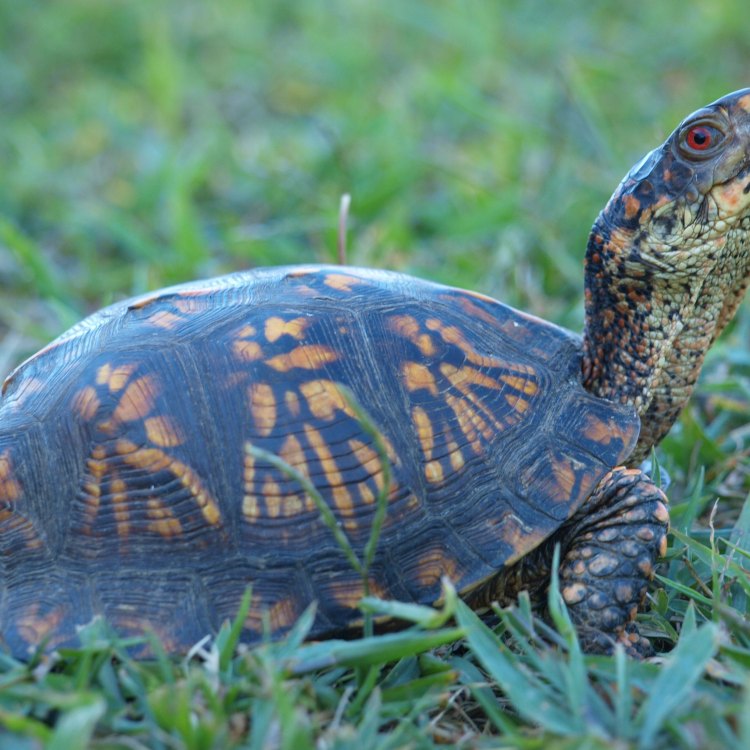
Box Turtle
- Adult Size: 4-8 inches (10-20 cm)
- Average Lifespan: 30-50 years
- Reproduction: Sexual
- Reproductive Behavior: Mating occurs in spring or early summer
- Sound or Call: Hissing sound when threatened
- Migration Pattern: No long-distance migration
- Social Groups: Solitary
- Behavior: Burrows in soil, hibernates in winter
- Threats: Loss of habitat, road mortality, predation
- Conservation Status: Vulnerable
- Impact on Ecosystem: Seed dispersal, prey for predators
- Human Use: Pet trade, traditional medicine
- Distinctive Features: Highly domed shell, hinged plastron
- Interesting Facts: Can live for more than 100 years in captivity
- Predator: Raccoons, skunks, foxes, snakes
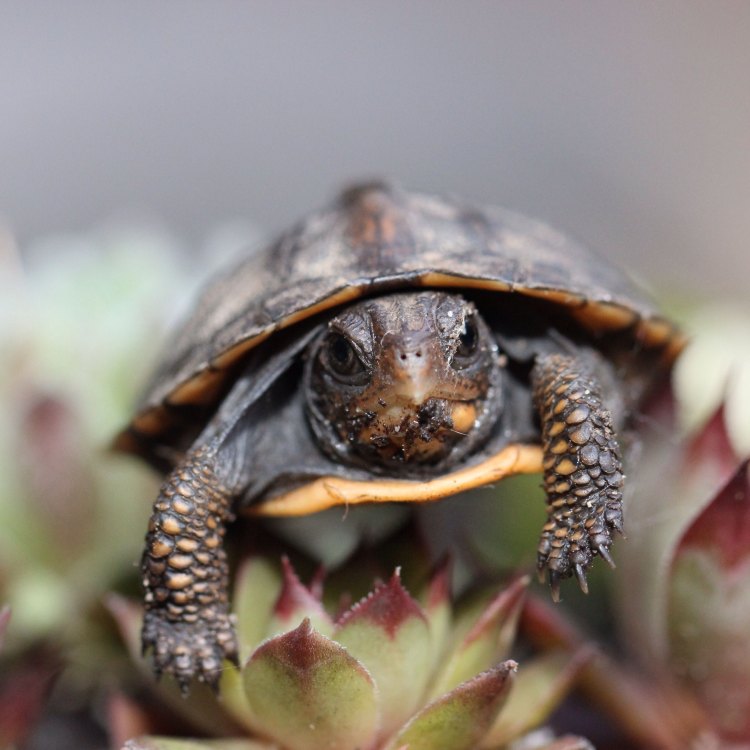
Terrapene Carolina
The Mysterious Box Turtle: Uncovering the Secrets of a Fascinating Reptile
The world is full of incredible creatures, some more well-known than others. Among the lesser-known species is the box turtle, a remarkable reptile that roams through the forests and fields of North America. These small, but resilient creatures have a lot more to their story than meets the eye. They have been a subject of fascination for centuries, with their unique features and behaviors capturing the imagination of all who encounter them PeaceOfAnimals.Com. In this article, we will delve deeper into the world of box turtles, uncovering their distinct characteristics, behavior, and important role in the ecosystem.Box turtles are small, terrestrial reptiles that belong to the family Emydidae. They are native to North America, with a range that extends from southern Canada to the Gulf of Mexico. These turtles are considered one of the most primitive species, as they retain features from their ancient ancestors that lived millions of years ago.
One of the most notable characteristics of a box turtle is its appearance. They have a highly domed and solid shell, which is usually brown or black in color. The shell is divided into two parts, the top being the carapace and the bottom the plastron. Unlike other turtles, the box turtle's shell is hinged, allowing it to close completely, safeguarding the turtle from potential predators.
Box turtles also have a unique feature that sets them apart from other turtles – their reproductive behavior Bernedoodle. They are one of the few species of turtles that exhibit sexual reproduction, meaning they need a male and a female to mate and produce offspring. Mating for box turtles occurs during the spring or early summer, and it is quite a fascinating process to witness.
During the mating season, male box turtles will actively search for a female, using their sense of smell to track her down. Once they find a female, they will perform a courting ritual, which involves circling and snapping at the female's legs. If the female accepts the male, they will mate, with the entire process lasting only a few minutes.
Once the female has laid her eggs in a shallow nest, she will cover them with soil and leaves and then leave them to hatch on their own. It takes around 80-100 days for the eggs to hatch, and the hatchlings will typically emerge during the late summer or early fall.
While box turtles have a unique reproductive behavior, their social behavior is quite the opposite. They are solitary creatures, preferring to spend most of their time alone. In fact, box turtles have been known to be quite aggressive towards other turtles, especially during the mating season. They may also exhibit territorial behavior, establishing a home range that they fiercely defend.
Box turtles are also known for their burrowing behavior, spending a significant amount of time digging in the soil. They use their powerful front legs and sharp nails to create burrows, which serve as their shelter and a place to hibernate during the winter months. This behavior is especially useful during periods of extreme weather, providing a safe haven for the turtles.
Speaking of hibernation, box turtles have an interesting way of preparing for the colder months. They don't migrate to warmer regions like other animals do. Instead, they burrow deep into the ground and enter into a state of torpor, where their body functions slow down significantly to conserve energy. They hibernate until the weather warms up again, usually emerging in the spring.
But despite their unique and fascinating behaviors, box turtles face numerous threats that endanger their survival. One of the biggest threats is the loss of their habitat. As human development expands, the forests and fields where box turtles reside are being destroyed, leaving them with nowhere to go. This habitat loss also disrupts their natural behaviors, such as hibernation and nesting, which can impact their reproductive success.
Another significant threat to box turtles is road mortality. As they cross roads, they are at risk of getting hit by cars, which can lead to injury or death. This is particularly concerning because box turtles take a long time to reach sexual maturity, making it critical for their survival that they reach adulthood.
Additionally, box turtles also have natural predators that pose a threat, including raccoons, skunks, foxes, and snakes. These predators can easily crack open the turtle's shells or consume their eggs, making them a significant threat to the population.
Due to these ongoing threats, box turtles are now considered a vulnerable species. Their populations have declined significantly, and they are at risk of disappearing from many areas. This is particularly alarming because of the vital role they play in the ecosystem.
Box turtles have a significant impact on their environment, especially in terms of seed dispersal. They consume various fruits and plants, and as they move around, they spread the seeds of these plants, aiding in their growth and reproduction. This helps to maintain a healthy balance in the ecosystem and supports the growth of new plant life.
They also serve as prey for several predators, helping to control their populations and maintain the balance in the food chain. Without box turtles, the ecosystem would be greatly impacted, highlighting the importance of their conservation.
Unfortunately, despite their vital role in the ecosystem, box turtles are also exploited by humans for various purposes. One of the most significant uses of box turtles is in the pet trade. These turtles are often captured from the wild and sold as pets, leading to a decline in their wild populations. Additionally, in some cultures, box turtles are used in traditional medicine, further contributing to their declining numbers.
But for those who are lucky enough to have a box turtle as a pet, they are in for a long-term commitment. These turtles have a surprisingly long lifespan, with some individuals living for more than 100 years in captivity. This makes them one of the longest-living reptiles in the world, and they can even outlive their human owners.
In conclusion, the box turtle may seem like a simple, unassuming creature at first glance. But as we have discovered, there is much more to this small reptile than meets the eye. From their unique physical features to their solitary and burrowing tendencies, and their role in the ecosystem, box turtles are a truly intriguing species.
As they face ongoing threats and endangerment, it is crucial that we work towards their conservation. It is our responsibility to protect and preserve these magnificent creatures for future generations to continue admiring and learning from them. So the next time you come across a box turtle, take a moment to appreciate its beauty and its important place in our natural world.
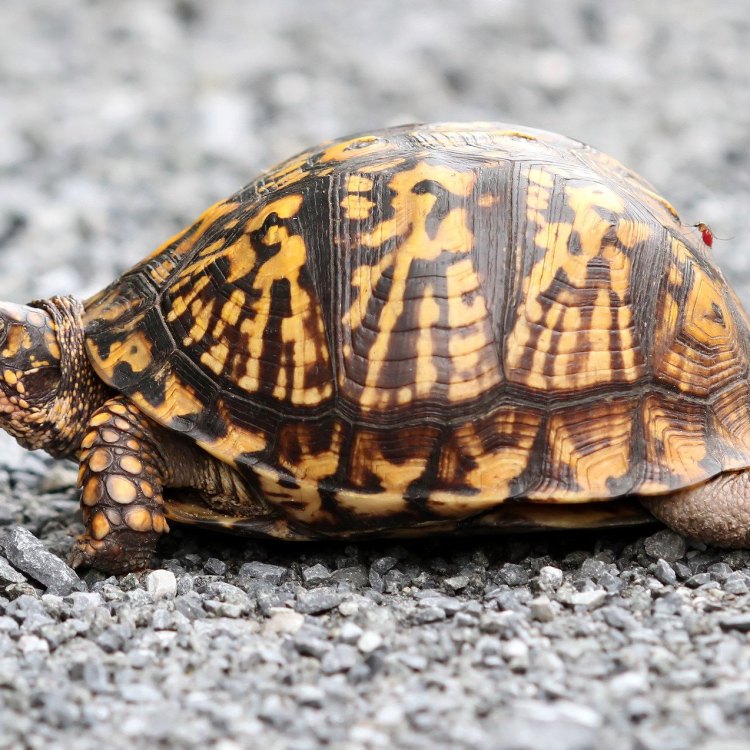
The Fascinating World of Box Turtles
Disclaimer: The content provided is for informational purposes only. We cannot guarantee the accuracy of the information on this page 100%. All information provided here may change without prior notice.

